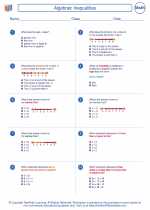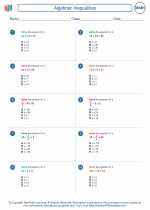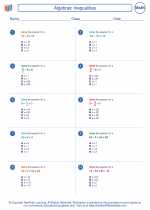Irregular Tessellations Study Guide
Tessellations
A tessellation is a repeating pattern of shapes that completely covers a plane without any gaps or overlaps. The shapes used in a tessellation can be regular polygons or other shapes.
Regular Polygons
Regular polygons are closed shapes with equal sides and equal angles. Examples include squares, equilateral triangles, and regular hexagons.
Irregular Tessellations
Irregular tessellations use a combination of different shapes, including regular and irregular polygons, to cover a surface without any gaps or overlaps.
Study Guide for Irregular Tessellations:
- Shapes: Learn about different shapes that can be used in tessellations, including regular polygons (e.g. triangles, squares, hexagons) and irregular polygons (e.g. pentagons, octagons).
- Tessellation Rules: Understand the rules for creating a tessellation, such as the requirement that shapes must fit together without any gaps or overlaps.
- Art and Design: Explore examples of irregular tessellations in art, design, and architecture. Analyze how different shapes are combined to create visually appealing patterns.
- Symmetry: Study the concept of symmetry in irregular tessellations. Understand how symmetry can be achieved by repeating and mirroring shapes to create a balanced pattern.
- Real-World Examples: Look for irregular tessellations in the real world, such as in tiling patterns, mosaics, and decorative designs.
By understanding the concepts of shapes, tessellation rules, symmetry, and real-world examples, you can develop a deeper appreciation for irregular tessellations and their applications.
Create a Tessellation
- Select Shapes: Choose a combination of regular and irregular shapes to use in the tessellation.
- Arrange Shapes: Arrange the selected shapes to fill the plane without any gaps or overlaps.
- Repeat Pattern: Repeat the pattern to cover the entire surface, creating a visually appealing irregular tessellation.
◂Math Worksheets and Study Guides Seventh Grade. Algebraic Inequalities
Study Guide Algebraic Inequalities
Algebraic Inequalities  Worksheet/Answer key
Worksheet/Answer key Algebraic Inequalities
Algebraic Inequalities  Worksheet/Answer key
Worksheet/Answer key Algebraic Inequalities
Algebraic Inequalities  Worksheet/Answer key
Worksheet/Answer key Algebraic Inequalities
Algebraic Inequalities 

 Worksheet/Answer key
Worksheet/Answer key
 Worksheet/Answer key
Worksheet/Answer key
 Worksheet/Answer key
Worksheet/Answer key

The resources above cover the following skills:
Algebra (NCTM)
Represent and analyze mathematical situations and structures using algebraic symbols.
Use symbolic algebra to represent situations and to solve problems, especially those that involve linear relationships.